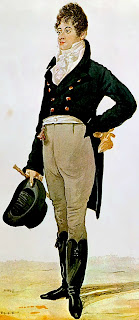A new film has been announced – The Lady Who Went Too Far. From the writer and producer of The King’s Speech comes the story of Lady Hester Stanhope, based on the biography “Star of the Morning,” by Kirsten Ellis. Set during the Napoleonic Wars, the story follows the life of world traveler Stanhope and contains elements of a political thriller as Hester moves through Europe and the Middle East.
“She was a female Lawrence of Arabia, a hundred years before Lawrence,” said screenwriter David Seidler, whose credits also include Tucker: The Man And His Dream.
“It wasn’t that she was trying to change the world, she was just living the life that she thought she should have been afforded, to go on these great adventures, she did have a voice that should be heard,” producer Gareth Unwin told Screen. “If you ever want to find great stories, you only have to look to our past.”
 |
| Lady Hester Stanhope |
“Hers is a very powerful story that’s never been told cinematically before,” added biographer Kirsten Ellis. “She’s an undiscovered iconic emblem and the film will lift the lid on what made Hester spend half her life in the Middle East and what she tried to achieve there.”
In reviewing the book for The Independent, Robert Irwin swipes at Hester by closing with, “Though she (Ellis) writes well, it is not clear that her subject deserves so much devotion. During communal strife, Hester sheltered refugees and could be generous, but more often she was mean. She was also histrionic, superstitious, malicious and vainglorious. One has to rid oneself of the romantic trappings in order to see Hester Stanhope as what she became before her death in 1839 – a batty and embittered old English expat living on tick. There are thousands like her all over the world today.”
Of course, Reader, we are not concerned with those living today. We are, however, always interested in a true 19th century character, and as such Hester qualifies. As does Brummell if one is going to speak of being “histrionic, superstitious, malicious and vainglorious,” not to mention living on the tick. If authors were to stick only to those subjects who were worthy of praise or plaudits, the non-fiction shelves would be bare, indeed. Brava to Ellis for taking Hester on. We wait to hear who will play her in the film.
You can find Ellis’s book at Amazon here and visit the author’s website here







